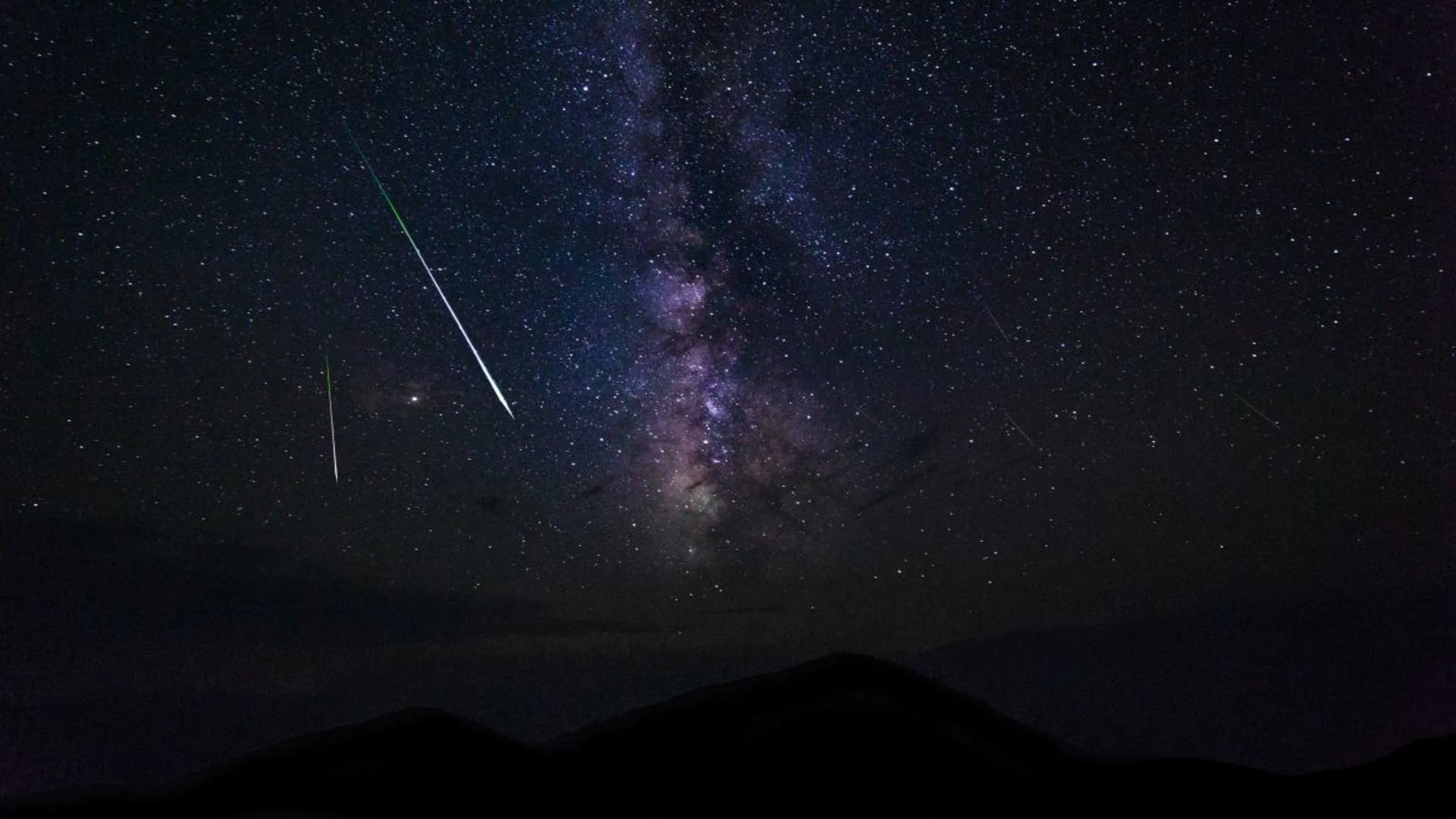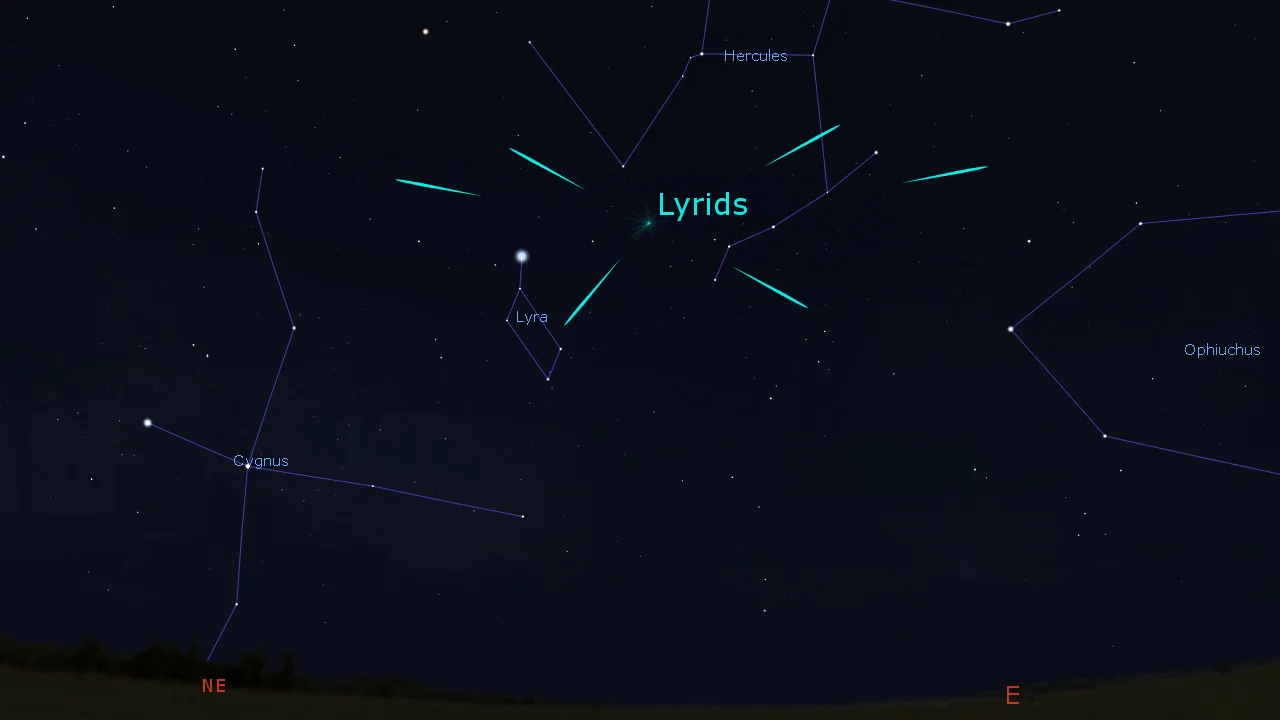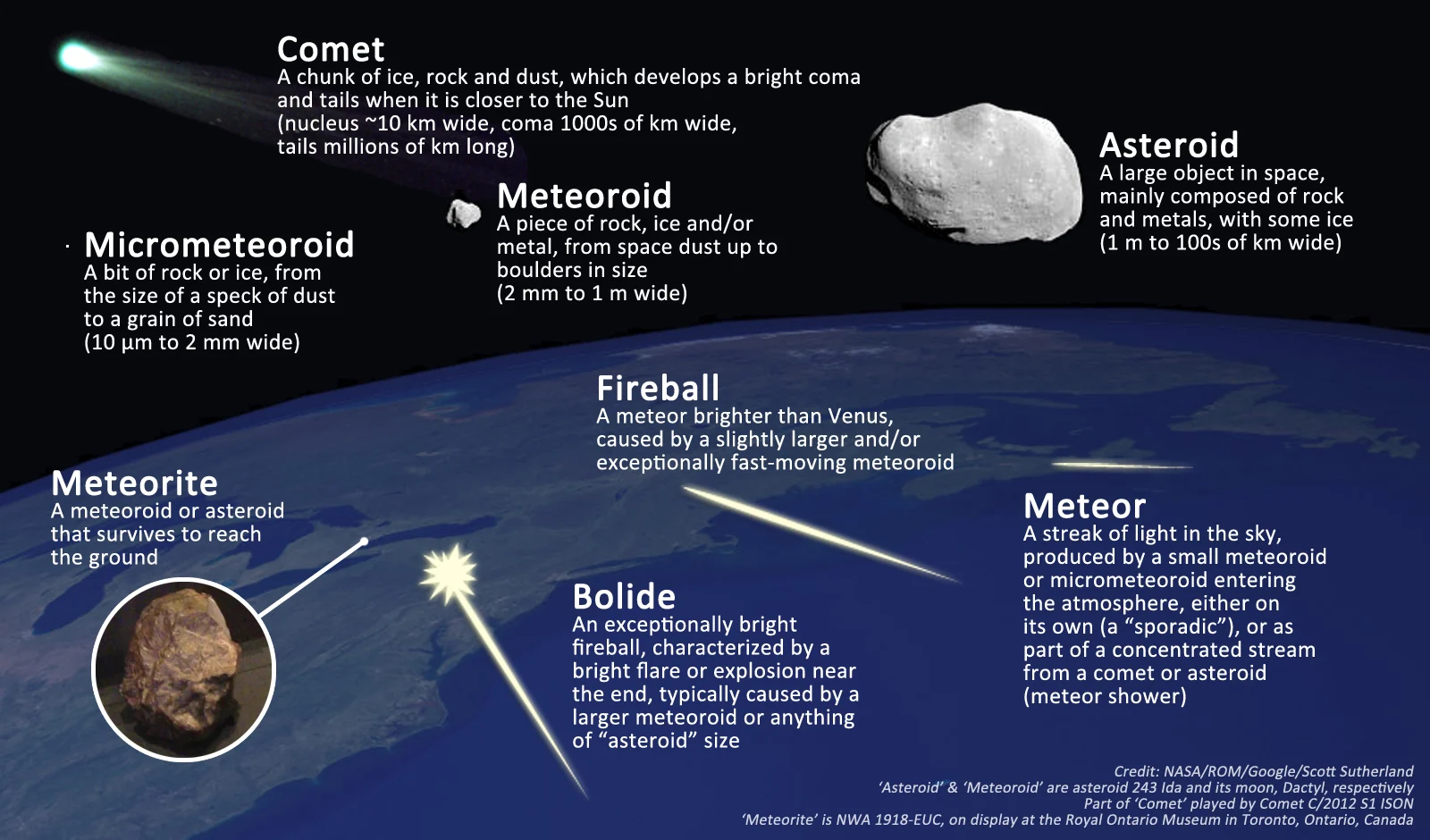
The Lyrid meteor shower peaks tonight! Here's how to watch it from anywhere
The first meteor shower of spring, the 'Earth Day' Lyrids, are definitely a sight to see.
Eyes to the sky on Wednesday night and Thursday morning! The Lyrid meteor shower is reaching its annual peak!
As our planet travels along its orbit around the Sun, it is currently passing through a stream of dust, ice and grit left behind by the passage of a comet known as C/1861 G1 Thatcher. The comet itself is presently billions of kilometres away, out beyond the orbit of Pluto. Last seen in 1861, it will not be seen again near Earth until the year 2276.
Still, each year we receive a reminder of Comet Thatcher's existence as Earth passes through the near-constant stream of tiny meteoroids strung out along its path. Each year in April, this shows up as the Lyrid Meteor Shower, which reaches its peak around April 22.

The radiant of the Lyrid meteor shower, at midnight on the night of April 21-22. Credit: Stellarium/Scott Sutherland
The stream of meteoroids from Comet Thatcher tends to be relatively sparse. Thus, even at the meteor shower's peak, the Lyrids only deliver around 20 meteors per hour. Most viewers only see about half that number. Still, embedded within the stream are some larger meteoroids. When those hit the atmosphere, bright fireballs add to the show!
Related: Got your hands on a space rock? Here's how to know for sure
WILL WE SEE IT?
The 'radiant' of this meteor shower — the point in the sky where the meteors appear to originate — rises in the east as the Sun sets on Wednesday and tracks across the night sky towards dawn on Thursday.
The ideal time to watch is in the hours after midnight, when the sky is darkest, and the radiant is high in the sky. The peak of this meteor shower tends to be wider than most, though, so if you miss the show on Wednesday night/Thursday morning, try again on Thursday night.
Check your forecast and the map shown below to see if your sky will be reasonably free of clouds. Also, be sure to read on for tips on meteor watching.

If it is cloudy where you are, there are other ways to 'watch' this meteor shower. You can see the signal meteoroids make when they plunge into the atmosphere via Meteor Radar or listen to them via the latest Meteor Echoes Livestream. Astronomy Live Stream also presents nightly views of the sky over Colorado.
METEOR? METEOROID? METEORITE?
The bright streaks we see during this event are known as meteors. Each occurs due to a meteoroid plunging through Earth's upper atmosphere.
Meteoroids travel at incredible speeds through the atmosphere, ranging between 11-71 km/s. As they do, they compress the air in their path, causing that air to glow white-hot. A typical meteor flash tends to last a second or less, and it is caused by a tiny speck of dust or ice. In general, the larger and faster a meteoroid is, the brighter the meteor from it will be. Larger meteoroids tend to cause longer-lasting meteors, as well, but this can depend greatly on the angle of the object's plunge into the atmosphere.
These brighter meteors are called fireballs, and if it explodes, it is often referred to as a bolide.

Regardless of how bright it is, a meteor 'winks out' either when the heat of the compressed air completely vapourizes the meteoroid or when the meteoroid slows to the point where it cannot compress the air enough to cause it to glow. Once this happens, any part of the meteoroid that survived to this point enters 'dark flight'. It basically becomes a rock falling from the sky, and if we find these rocks on the ground, we call them meteorites.
Related: Want to find a meteorite? Expert Geoff Notkin tells us how!
TIPS FOR METEOR WATCHING
First, some honest truth: Many who want to watch a meteor shower end up, unnecessarily, missing out on the experience. Follow this guide to get the most out of these events.
Here are the three 'best practices' for watching meteor showers:
Check the weather,
Get away from light pollution, and
Be patient.
Clear skies are very important for meteor spotting. Even a few hours of cloudy skies can ruin an attempt to see a meteor shower. So, be sure to check The Weather Network on TV, on our website, or from our app, and look for my articles on our Space News page, just to be sure that you have the most up-to-date sky forecast.
Next, you need to get away from city light pollution. If you look up into the sky, are the only bright lights you see street lights or signs, the Moon, maybe a planet or two, and passing airliners? If so, your sky is just not dark enough for you to see any meteors. You might catch a bright fireball, but there's no guarantee, and those are typically few and far between. So, get out of the city, and the farther away you can get, the better!
Watch: What light pollution is doing to city views of the Milky Way
For most regions of Canada, getting out from under light pollution is simply a matter of driving outside of your city, town or village until a multitude of stars is visible above your head. In some areas, especially southwestern and central Ontario and along the St. Lawrence River, the concentration of light pollution is too high. Getting far enough outside of one city to escape its light pollution tends to put you under the light pollution dome of the next city over.
In these areas of concentrated light pollution, there are dark sky preserves. However, a skywatcher's best bet for dark skies is usually to drive north and seek out the various Ontario provincial parks or Quebec provincial parks. Even if you're confined to the parking lot after hours, these are usually excellent locations from which to watch (and you don't run the risk of trespassing on someone's property).
Sometimes, based on the timing, the Moon is also a source of light pollution, and it can wash out all but the brightest meteors. We can't get away from the Moon, so we can just make do as best we can in these situations.
Once you've verified you have clear skies and you've gotten away from light pollution, this is where having patience comes in.
For best viewing, you must give your eyes time to adapt to the dark. Give yourself at least 20 minutes, but the longer, the better. Warning: if you skip this step — even if you follow the rest of this guide — you will miss out on a lot of the action.
During this adjustment time, avoid all bright light sources — overhead lights, car headlights and interior lights, and cellphone and tablet screens. Any exposure to bright light during this period will cancel out some or all of the progress you've made, forcing you to start over. If you need to use your cellphone during this time, set the display to reduce the amount of blue light it gives off and reduce the screen's brightness as much as possible. It may also be worth finding an app that puts your phone into 'night mode', to shift the screen colours into the red end of the light spectrum, which will have less of an impact on your night vision.
You can certainly look up into the starry sky while you are letting your eyes adjust. You may even see a few brighter meteors as your eyes become accustomed to the dark. If the Moon is shining brightly, turn so that it is out of your personal field of view.
Once you're all set, just look straight up!
